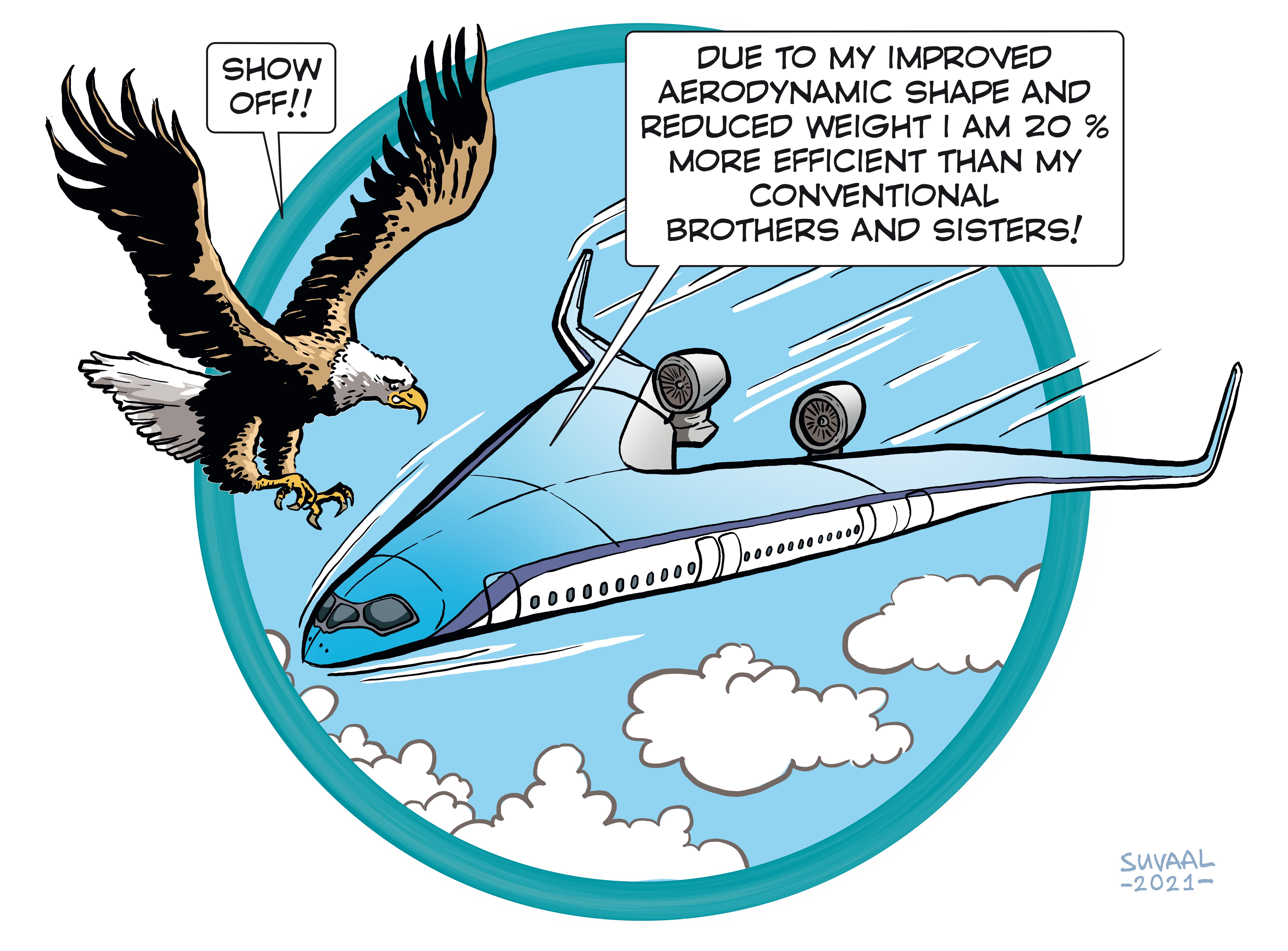Flying V – an energy efficient aircraft design
Research Themes: Energy, Aerospace


A TRL is a measure to indicate the matureness of a developing technology. When an innovative idea is discovered it is often not directly suitable for application. Usually such novel idea is subjected to further experimentation, testing and prototyping before it can be implemented. The image below shows how to read TRL’s to categorise the innovative ideas.
Summary of the project
Energy neutral flying is a huge challenge. Simply put, in order to fly, the resistance of the plane has to be compensated by the thrust of the engine. There are many aspects of the aircraft that can be altered or changed in order to make flying more energy efficient – such as redesigning the engine, building a plane with lighter materials etc. The idea of the project was to design an aircraft that is as energy efficient as possible while being able to fulfill the same function as our conventional aircraft perform nowadays. This has resulted in the flying V, a highly energy-efficient aircraft design for long distance flights. This is a completely new type of aircraft with a completely different plane configuration; this aircraft no longer has a tail, the passenger cabin is located in the wing, the aircraft is more aerodynamic and lower structural weight. However, it can still fulfill the same functions of carrying people and freight. A scale model prototype has been built to demonstrate the flying abilities and measure the flight dynamics and control of the aircraft.
What's next?
The next step is to build an ecosystem Flying V. An ecosystem in which as many stakeholders as possible are engaged to further mature the design of the Flying V. With more industrial support we hope to be able to make some steps towards building a full-scale prototype
Contribution to the Energy transition?
With this radically different aircraft configuration an efficiency of 20% compared with flying a conventional plane can be achieved without compromising in functionality. This is achieved by its improved aerodynamic shape and reduced weight.
dr. ir. Roelof Vos
prof. dr. ir Peter Vink
dr. Feijia Yin
dr.ir. Erik-Jan van Kampen
ir. Nando van Arnhem
dr. Xuerui Wang
prof.dr.ir. Mirjam Snellen
dr.ir. René Alderliesten
dr.ing. Saullo Castro
Daniel Atherstone
ir. Malcom Brown
ir. Pieter-Jan Proesmans
Carmine Varriale MSc
prof.dr.ir. Leo Veldhuis
dr.ir. Coen de Visser
ir. Olaf Stroosma
ir. Alberto Ruiz García
ing. Eddy J. van den Bos
Faculties involved
- AE
- IDE
